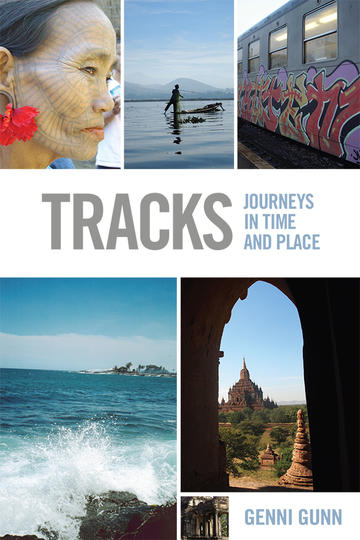I’m in a rented car, at a railway crossing on the outskirts of Rutigliano, in southern Italy, when the train passes and the squeal of its wheels on metal transports me to a time before my birth, to a 1940 night sky in Locorotondo, where from her room my aunt Ida watched trains emerge and disappear into the railroad cutting in front of my grandparents’ house. It’s May 2007, and I’ve spent the last month at the bedside of this aunt who, over the past five years, has told me her life story so often, I have begun to appropriate it, weeping and laughing in all the right places, mouthing the words right along with her. Ida is the guardian of our family stories, our oral historian. She claims absolute knowledge of everyone – despite my mother’s objections – and will recite particulars from all our lives, in dramatic arcs, complete with dialogue – mythologies which are difficult to prove or disprove. I have been taking daily drives into the countryside to escape the weight of her past which, for the most part, Ida recounts in tragic, melodramatic tones, ending in maudlin, self-pitying sentences such as, “Oh how I’ve suffered!” and “I have worn out my threshold of pain.” During these afternoon drives, I can breathe deeply, unencumbered by her reproach which feels directed at me, even though her stories occurred decades before my birth. I cross the tracks, and continue along the highway. At either side, rows upon rows of vines spread their arms beneath the mammoth nets that protect the grapes from hail, like prisoners praying for rescue, their legs tied, their heads back, faces to the merciless sun. As I drive on, the sky darkens with thunderclouds, and a surge of excitement – a memory – presses against my temples. I follow it to Locorotondo, tracing the map in my aunt’s head, the map of a young girl walking to school in the morning snow, flanked by her two brothers, Pippi and Alberto, all of them in paper-thin shoes and rough hand-knitted sweaters, all of them happy, carefree, Ida tells me, in a way she’s never felt since. I approach the town from the north, drive up into it, up up past the school where Ida spent that year teaching small children, past the overlook at the park where old men on benches stare at the sprawling valley below. My grandparents moved here in July of 1940, a month after Mussolini declared war on the Allied Forces. As a trackman, and also because of his difficult nature, Nonno had been relocated so often, his seven children – of whom Ida was the eldest – were dizzy with disruptions, unable to make friends, and weary of strangers, who constituted everyone outside the family. It explains, perhaps, Ida’s melancholy, her persistent memory, although she attributes it to Fridays – the day of her birth – which she tells me is unlucky, because it’s the day Christ died. A day of superstitions, she says, a small ironic smile curling her lips. Back then, people did not shop on Fridays or begin new projects or sign contracts or plan feasts. On Fridays, she tells me, people did not marry, nor did they baptize their children. If a man shaved on a Friday, he would be betrayed by his wife, or he would become widowed at an early age, and he who cut his nails on this day, would have to gather them on Judgement Day. One did not go visiting, send gifts, nor buy clothes, and if the first day of the year was a Friday, there would be wars, tempests and a thousand other natural disasters. Furthermore, she tells me triumphantly, children born on Fridays can expect to cry often during their lives – and this Ida has proven to be true. My grandparents’ Casello Ferrovia #72 – the trackman’s hut – is situated next to a railway crossing, the tracks of which wind below the hill, two kilometres from Locorotondo, in the Valle d’Itria, a karstic depression, not actually a valley, but a firmament of green hills and vales studded with over 20,000 trulli – the white conical ancient dwellings – and with limestone farmhouses. Locorotondo – round place, as the name suggests – is one of numerous marvellous towns found throughout southern Italy, built on hilltops, and fortified by immense walls and towers. Inside are medieval cities, all wonderfully preserved. From the highways at night, these towns look magical, lit up and round like multiple nativity scenes. In the daytime, Locorotondo rises four hundred metres above sea level, one of three natural balconies that surround the valley, and from which one can admire the Mediterranean brush, an indigenous vegetation that includes groves of Macedonian, bay and holm oak, laurel, myrtle, hawthorn, lentisk, wild olives and black orchids. Nowadays, this valley is a patchwork of stone stitching an infinite number of handkerchiefs of red earth, dominated by vineyards and country estates. When my grandparents lived there all those years ago, however, they knew nothing of castles or monuments, didn’t realize those oaks were 800 years old. All they saw was a pervading green, stone walls built without mortar, fields of red poppies and yellow daisies. And at night, outside their window, the town appeared suspended in darkness.



